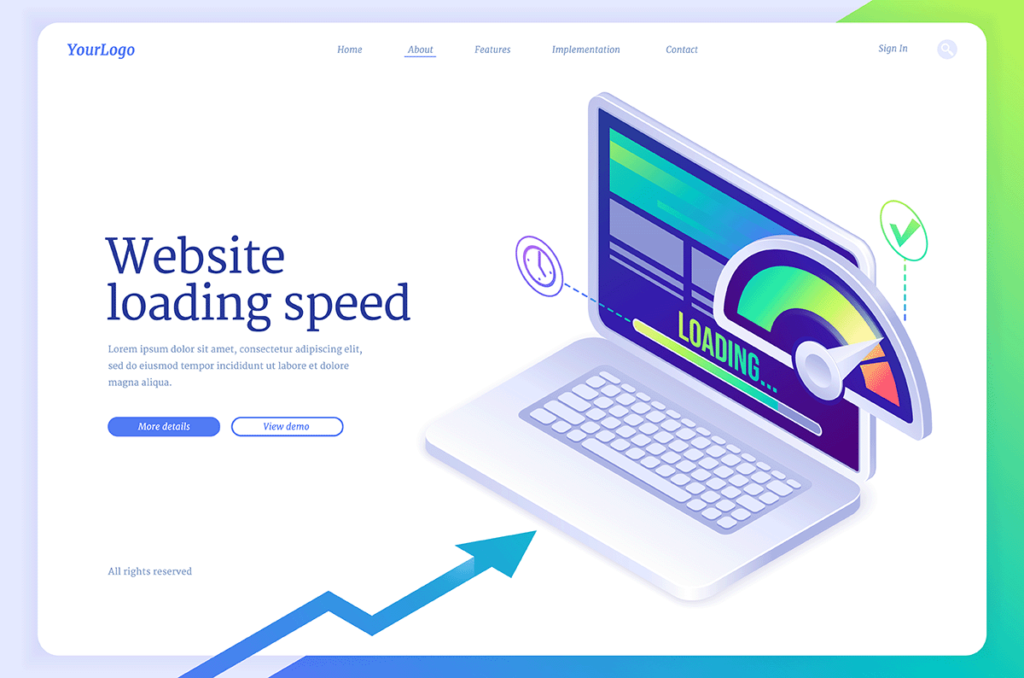Table of Contents
In this comprehensive guide, we delve into the nitty-gritty of optimizing website speed to ensure your site not only performs at its best but also ranks higher on Google. Speed is paramount in the digital age, and Google’s algorithms reward websites that load quickly and provide a seamless user experience. We understand the urgency, so let’s jump straight into the details.
Understanding the Importance of Website Speed
Website speed is more than just a ranking factor; it’s a crucial aspect of user satisfaction. Visitors expect websites to load quickly, and if your site doesn’t meet these expectations, you risk losing valuable traffic. Here’s why it matters:
1. User Experience Enhancement
A fast-loading website provides a better user experience, reducing bounce rates and increasing engagement. Users are more likely to stay and explore when pages load swiftly.
2. SEO Benefits
Google rewards fast-loading websites with higher rankings. Faster sites tend to rank better in search results, driving organic traffic and improving your online visibility.
3. Conversion Rate Boost
Speedy websites convert better. A quick-loading page is more likely to convert visitors into customers, contributing to your bottom line.
Diagnosing Website Speed Issues
Before you can optimize your website for speed, you need to identify the issues that are slowing it down. Here’s how to diagnose speed problems effectively:
1. Use Google Lighthouse
Google Lighthouse is a powerful tool that provides a comprehensive analysis of your website’s performance. It evaluates various aspects, including performance, accessibility, SEO, and more. Use Lighthouse to pinpoint specific issues affecting your site’s speed.
2. DebugBear for In-Depth Insights
For a more detailed analysis, consider using DebugBear. This tool offers in-depth insights into your website’s performance, highlighting potential bottlenecks and areas for improvement.
Strategies for Speed Optimization
Now that you’ve identified the issues, it’s time to optimize your website for speed. Here are some effective strategies:
1. Image Optimization
Large images can significantly slow down your site. Compress and resize images to reduce their file size without sacrificing quality.
2. Minimize HTTP Requests
Reduce the number of HTTP requests by combining CSS and JavaScript files and using browser caching.
3. Content Delivery Network (CDN)
Implement a Content Delivery Network to distribute your website’s content across multiple servers globally, ensuring faster loading times for users worldwide.
4. Lazy Loading
Lazy loading delays the loading of non-essential content until users scroll down the page, improving initial load times.
5. Reduce Server Response Time
Optimize your server’s response time by using efficient coding practices and a reliable hosting provider.
The Impact of Single Page Applications (SPAs)
Single Page Applications (SPAs) offer a dynamic user experience but can be challenging to optimize for speed. Here’s how to tackle this:
1. Server-Side Rendering (SSR)
Implement Server-Side Rendering to improve SPA load times. SSR pre-renders pages on the server, reducing initial load times.
2. Code Splitting
Divide your SPA code into smaller, manageable chunks to reduce the initial payload and improve performance.
Conclusion
Optimizing your website for speed is essential for ranking higher on Google and providing a top-notch user experience. By following these strategies and utilizing tools like Google Lighthouse and DebugBear, you can ensure your site loads quickly, attracts more visitors, and ultimately outranks competitors. Don’t underestimate the power of website speed – it’s a game-changer in the world of SEO and user satisfaction.
